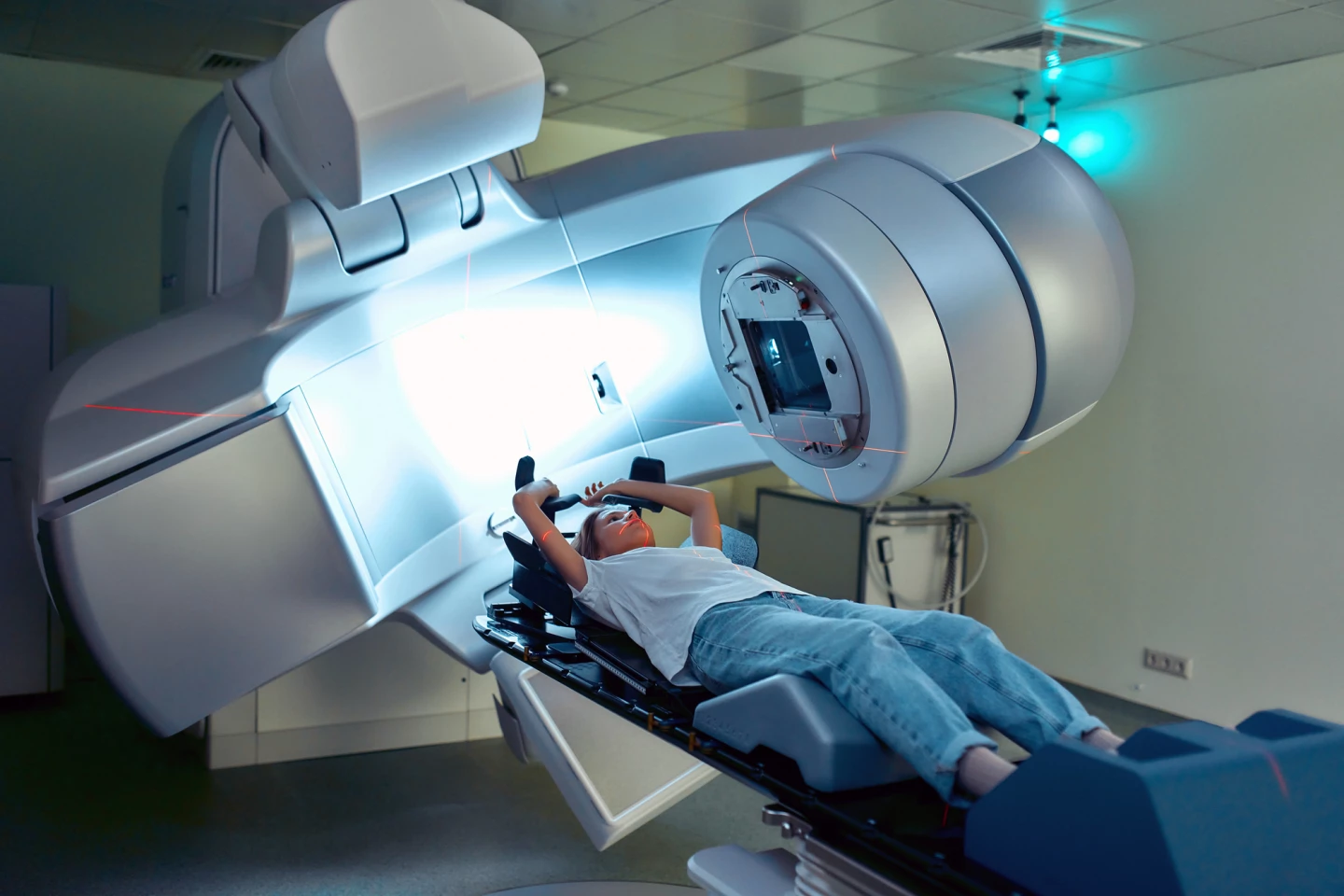Precision-targeted radiation is proving a match for surgery in early-stage lung cancer, offering patients similar long-term survival with less invasiveness, and potentially transforming how this common cancer is treated.
Non-small cell lung cancer (NSCLC) is the most common form of lung cancer, accounting for about 87% of all lung cancers. It is typically slow-growing and spreads more slowly than small-cell lung cancer. If caught early, it’s often successfully treated with surgery. However, many patients, especially older adults or those with other health issues, may not be good candidates for surgery.
A recent report from a clinical trial led by researchers from the University of Texas MD Anderson Cancer Center investigated whether a far less invasive radiotherapeutic approach could be as good as surgery in treating patients with early-stage NSCLC.
“Our study confirms, based on a decade of data, that stereotactic radiotherapy is a strong alternative to surgery for most patients with operable stage I NSCLC,” said the study’s corresponding author, Joe Y Chang, MD, PhD, a professor of thoracic radiation oncology and director of stereotactic ablative radiotherapy at the Anderson Cancer Center. “This highly targeted, non-invasive treatment achieved the same long-term overall survival as lobectomy, while offering many patients an easier recovery and potentially better quality of life.”
Stereotactic ablative radiotherapy (SABR), which is also known as stereotactic body radiation therapy (SBRT), involves delivering high doses of radiation with pinpoint accuracy over typically five or fewer treatment sessions. It’s the standard of care for patients with early-stage NSCLC who can’t undergo surgery.
This was a phase II non-inferiority trial, a type of study designed to test whether a new treatment (SABR) is not worse than the standard (surgery) by a significant margin. Enrolled in the trial were 160 people with early-stage NSCLC (tumors of 3 cm (1.2 in) or less, no lymph node spread or metastasis). Eighty patients received SABR; 80 matched patients underwent video-assisted thoracoscopic surgery (VATS) to remove the tumor and lymph nodes. The patients were carefully matched for age, gender, tumor type and size, and general health to ensure a fair comparison. Median follow-up was 8.3 years, with outcomes tracked for up to 10 years. Participants were also surveyed on long-term quality of life and the financial impact of their treatment.
In terms of overall survival, the SABR group did just as well as the surgery group. To put it another way, non-inferiority was met, meaning SABR was no worse than surgery when examined within the pre-set statistical margin. Median survival was 11.4 years after surgery, and hadn’t been reached yet for SABR, meaning that many patients were still alive. This indicates potentially better long-term outcomes for SABR, though the difference was not statistically significant. The seven-year overall survival was 81% for SABR vs 70% for surgery; at 10 years, it was 69% vs 66%, respectively. There were no significant differences in lung cancer-specific survival or recurrence-free survival between the two groups.

Some factors may have contributed to these numbers. All SABR patients had more thorough staging scans (100% vs 25% in the surgery group), which may have helped ensure they were correctly diagnosed as early-stage. Further, 11% of surgery patients had hidden lymph node cancer, and 14% needed additional treatment. Regarding patients’ quality of life and the financial impact of treatment, only 28% of SABR patients responded to the survey. Of those who responded, over half (53%) reported no financial burden from radiation treatment, but the strength of the conclusion is limited due to the reduced percentage of survey respondents.
“Surgery historically was the only standard option for early-stage NSCLC, but upwards of 50% of patients experience moderate or severe side effects afterward,” Chang said. “And as patients age, many cannot tolerate surgery, so there’s a growing demand for non-invasive options that provide durable local control.
“This study offers the clearest picture yet that radiation can also be an appealing option for suitable surgical candidates. It included a larger patient population than previously published randomized studies, and we’ve followed these patients for much longer.”
Radiotherapy may not be suitable for all patients, however, cautions Chang. For those with larger or more complex tumors or lymph node involvement, surgical removal likely remains the better option, he said. He also stressed that a radiotherapeutic approach requires collaboration between thoracic surgeons and radiation oncologists and the need to closely monitor SABR patients over time for recurrence of the cancer.
The researchers will continue to explore ways of further lowering recurrence rates, including the addition of immunotherapies and using AI to predict lymph node involvement.
“Our goal is to find new ways to push survival even higher,” said Chang.
The study’s abstract, which was presented at the American Society for Radiation Oncology (ASTRO) 2025 Annual Meeting, is available on the society’s website.
Source: University of Texas MD Anderson Cancer Center via Newswise


